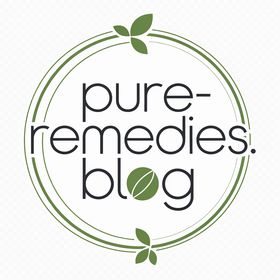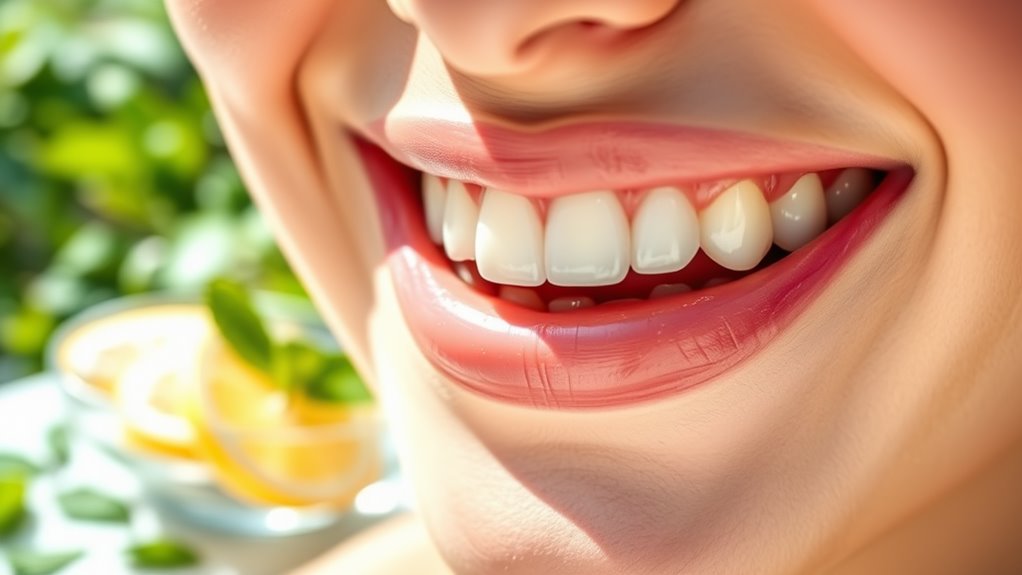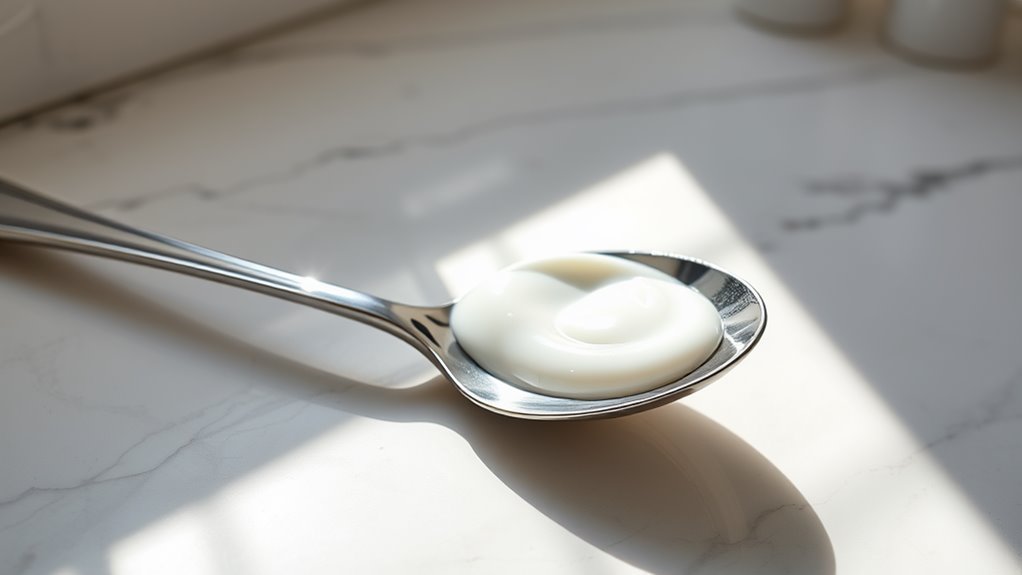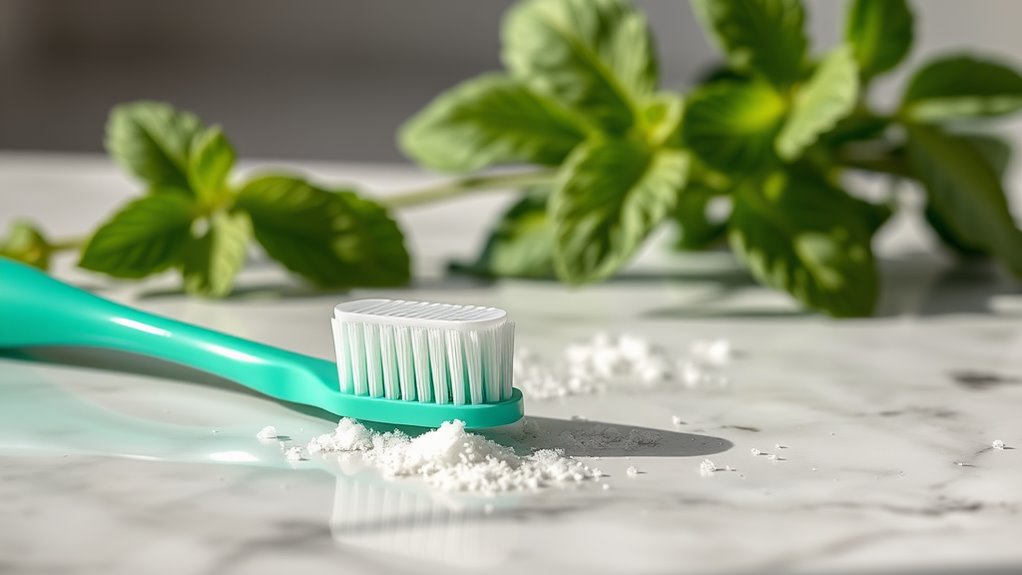Whitening Teeth Naturally. This DIY Paste Is Going Viral!
You can whiten your teeth naturally with this viral DIY paste using safe ingredients like baking soda for gentle polishing and coconut oil for its antimicrobial effects, as evidence shows. It’s a cost-effective option, but handle it cautiously—always patch test and consult a dentist to avoid irritation. Stick to the guidelines below for preparation and maintenance to achieve brighter results safely.
Key Takeaways
- This DIY paste uses natural ingredients like baking soda, hydrogen peroxide, and coconut oil for effective teeth whitening.
- Prepare the paste by mixing baking soda with coconut oil to achieve a smooth, creamy consistency.
- Apply the paste with a soft-bristled toothbrush for 1-2 minutes, then rinse thoroughly.
- Benefits include gentle whitening that reduces enamel damage and fights bacteria for better oral health.
- Maintain results by brushing twice daily, limiting coffee intake, and scheduling regular dental check-ups.
Ingredients for the DIY Paste
To make a safe, natural DIY paste for whitening your teeth, you’ll need simple ingredients like baking soda and hydrogen peroxide, which studies suggest can gently remove surface stains when used correctly.
In teeth whitening DIY, baking soda provides a mild abrasive action, backed by research showing it polishes teeth without eroding enamel when applied sparingly.
Hydrogen peroxide, a common antiseptic, offers oxidizing effects to break down pigments, but you must handle it cautiously to prevent gum sensitivity, as excessive use can irritate tissues.
For added benefits, consider coconut oil, which studies indicate has antimicrobial properties that may reduce bacteria linked to staining. Moreover, incorporating baking soda and lemon juice can offer an additional natural method for effective teeth whitening, as supported by guides on home remedies.
Always select food-grade ingredients to ensure safety, and consult a dentist before trying teeth whitening DIY routines, as individual responses vary.
This approach emphasizes evidence-based choices for natural care.
Additionally, combining baking soda and coconut oil into a daily one-spoon treatment can enhance whitening results while promoting oral health.
Step-by-Step Preparation
With your ingredients gathered from the previous discussion, mix them carefully to create the DIY paste. This step ensures a uniform blend that minimizes potential irritation, based on common natural remedy practices. Always handle ingredients hygienically to avoid contamination. These ingredients are commonly found in everyday household ingredients, promoting easy access for quick whitening solutions.
-
Combine dry elements: In a small, clean bowl, gently stir the baking soda and any powders together, envisioning a light, fluffy mixture that resembles fresh snow for even distribution.
-
Incorporate liquids: Slowly add coconut oil or similar, using a spoon to blend gradually, picturing the transformation into a smooth, creamy texture like softened butter.
-
Achieve consistency: Mix until the paste holds together without clumps, imagining a dollop that glides easily, ensuring it’s ready while preventing overuse of abrasives.
This DIY paste not only aids in whitening but also combats bad breath, enhancing overall oral health through natural methods.
Application and Usage Guide
Now, apply the prepared paste to your teeth with care to ensure safe and effective whitening. You’ll want to use a soft-bristled toothbrush to gently spread it across your teeth and gums, avoiding any vigorous brushing that could irritate sensitive areas. Always perform a patch test first to check for reactions, and don’t apply if you have open sores or allergies.
Below is a quick guide to help you apply and use the paste safely:
| Step | Guidelines |
|---|---|
| Preparation Check | Ensure paste is at room temperature before use. |
| Application Method | Gently brush onto teeth for 1-2 minutes. |
| Waiting Time | Let it sit for no more than 3 minutes. |
| Aftercare | Rinse thoroughly and avoid eating for 30 minutes. |
Benefits of This Natural Method
Opting for a natural teeth-whitening method like this one provides several key benefits, as it relies on gentle, everyday ingredients that minimize the risk of irritation.
This approach offers a safer, more accessible option compared to chemical alternatives, with evidence from dental studies suggesting it reduces enamel damage while enhancing your oral health.
You’ll appreciate how it integrates seamlessly into your routine, promoting long-term brightness without harsh effects.
-
Picture the paste’s baking soda gently lifting coffee stains, revealing a naturally radiant smile that boosts your confidence during daily interactions.
-
Imagine the soothing herbs calming your gums, creating a refreshing sensation that makes you feel revitalized after each use.
-
Envision a cost-effective solution using kitchen staples, allowing you to maintain a vibrant, stain-free appearance effortlessly over time.
Moreover, incorporating such natural ingredients into your oral care routine can parallel DIY face masks used for skin anti-aging, offering holistic benefits for your overall appearance.
Maintenance and Best Practices
After adopting this natural teeth-whitening method, you’ll need to maintain its effects through consistent practices that dental experts recommend.
Brush your teeth twice daily with a soft-bristled toothbrush to prevent plaque buildup, as evidence from dental studies shows this reduces staining risks. Limit intake of staining agents like coffee or red wine, opting for water or alternatives to preserve results.
Floss daily and use fluoride mouthwash, which research links to stronger enamel protection. Schedule biannual dental check-ups to monitor progress and catch issues early.
Avoid overusing the paste, as excessive application may cause sensitivity—always patch test first and consult a professional if you notice irritation.
For best outcomes, combine this with a balanced diet rich in fruits and vegetables, which can support natural whitening without harsh chemicals.





